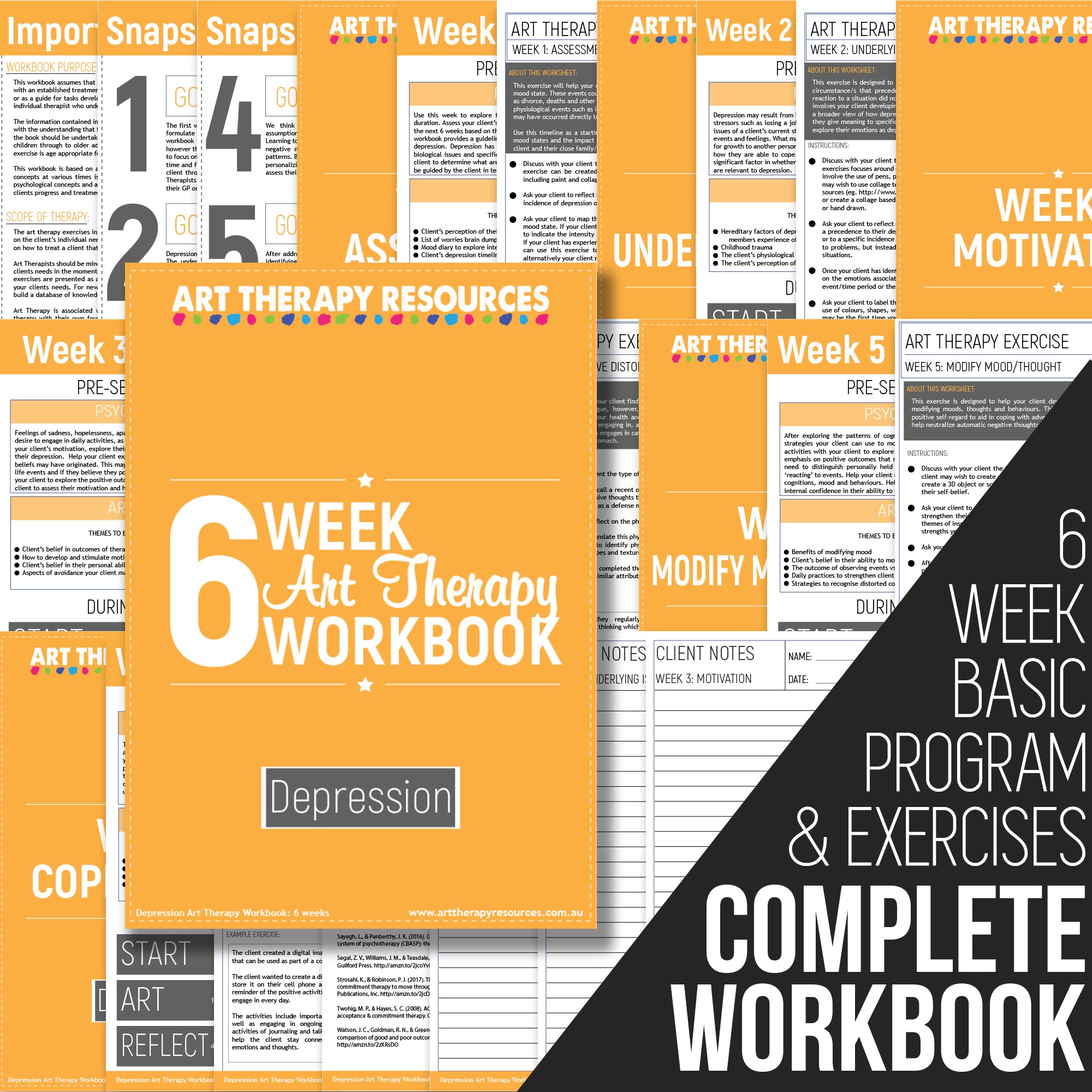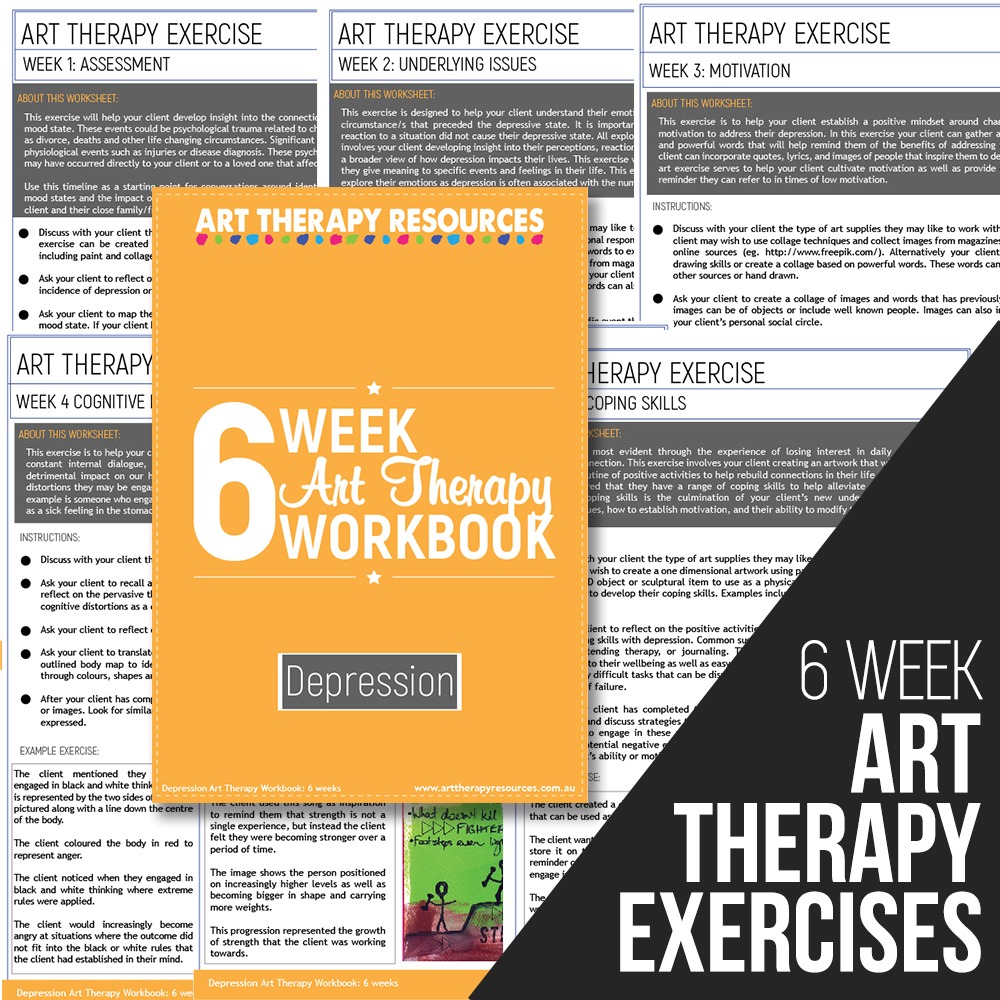ART THERAPY RESOURCES FOR DEPRESSION
We all experience sadness throughout life in reaction to difficult and stressful situations. For those diagnosed with depression, this sadness is magnified and is experienced through feelings of hopelessness, apathy and loss of pleasure in things that previously gave moments of joy. Depression extends beyond a few days of sadness and can often be experienced over weeks, months or years. As a result depression often negatively impacts an individuals ability to function in work, school, family and social life.
Depression symptoms can often manifest differently for individuals. For this reason, art therapy provides an alternative to treatment where sufferers have previously been resistant to talk therapy methods. Depression sufferers may have verbally expressed concerns to loved ones and received messages that feel like judgement of the individual’s feelings. Art therapy is a non-judgmental therapy where the client is encouraged to embrace their own creative expression. Art therapy is an unobtrusive approach to exploring emotional pain through non-verbal methods.
Talk therapy and expression through verbal insight can be difficult for some clients, therefore the process of non-verbal expression with no pressure can prove an effective technique for clients to express feelings.
Art therapy is effective within the construct of mood through two main processes. The client can create artwork which details their current mood and then use the artwork as a basis for discussion around their mood. Secondly, art itself can provide the client with a method to stabilize mood through relaxing art techniques and creativity.
The process of creative work also presents as a skill that develops and this development can aid as a boost to the client’s self-esteem. The outcome of a creative session can often provide the client with the satisfaction of achievement.
The effects of depression are profound and can impact the client’s ability and desire to seek therapeutic intervention. Clients may experience extreme levels of apathy and lack any motivation to seek help. CBT and medication have proven to be effective treatment methods, however, a client may show resistance to medication and lack the motivation to employ CBT techniques. In this instance, art therapy can provide an effective method to address resistance and lack of motivation.
Art therapy taps into many senses within the individual such as tactile and visual senses. Utilising these senses can help the client find positive aspects of life outside of ruminating on negative thoughts. Moreover, when the client is able to participate in creative activities, the brain taps into pleasurable feelings that can help boost mood.
Subtype depression disorders
DEPRESSION DISORDERS (subtypes)
- Major Depression
- Persistent Depressive Disorder
- Bipolar Disorder
- Seasonal Affective Disorder (SAD)
- Psychotic Depression
- Postpartum Depression
- Premenstrual Dysphoric Disorder (PMDD)
- Situational Depression
- Atypical Depression
Resources for Depression
Helpful Contacts:
OTHER PSYCHOLOGICAL ISSUES
DEPRESSION ART THERAPY WORKBOOKS
QUICK LINKS
BUSINESS RESOURCES
We acknowledge the traditional owners of country throughout Australia.



